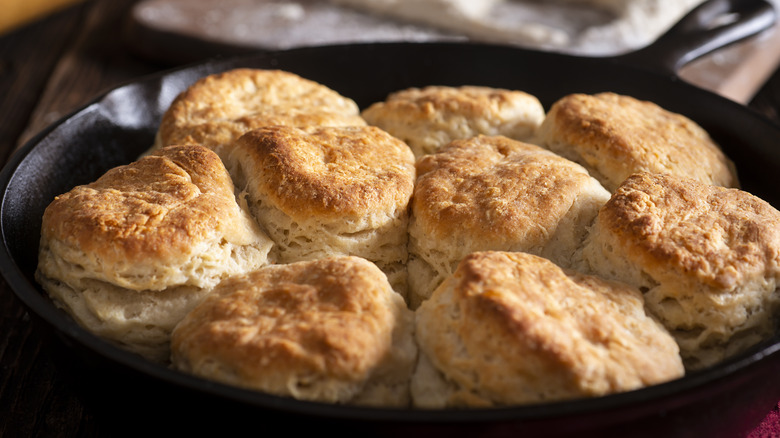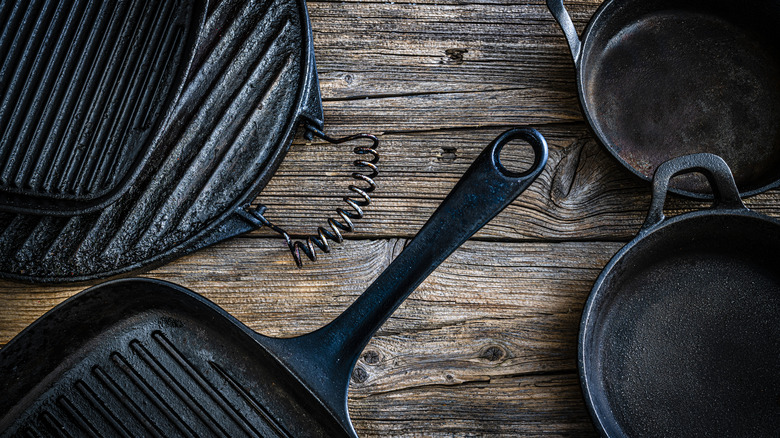The Common Misconception About Cast Iron Cookware You Need To Ignore
My Mississippi grandma's fried chicken and biscuits were legendary. We always assumed it was her well-honed skills or hidden techniques, but as adults ourselves, my siblings and I finally understood. It was that super-heavy, jet-black, cast-iron skillet. She harbored the same one for many decades, and as far as we knew, cooked with it every single day, morning to night. But here's the thing — in all the years of being a miniature wannabe chef, following her steady footsteps from oven to fridge and after-dinner sink washing, I never recall a single minute of pampering that pan.
When I finally had my own kitchen and cast-iron skillet, it never crossed my mind to give it special care or attention, as it wasn't in the slightest bit delicate or easily damaged. A supposed finicky nature is the most common misconception about cast iron cookware. That's a relatively new thing, compared to the sturdy utilitarian cooking approach of early American cast-iron cookware companies such as Griswold, Wagner, and Lodge, founded in Tennessee in 1896, just a skip over the state line from Mississippi.
Lodge, still thriving today as a go-to maker of affordable cast-iron pans, even points out the resilience of cast iron and notes the persisting tall tales about using and caring for these workhorse sentinels of kitchen success. You can largely ignore the rumored fragility — though cast iron does come with some nuances. Understanding the simple dos and don'ts will strengthen the bond between chef and pan.
Cast iron care is easier than you thought
First up is the mystique of seasoning cast-iron cookware. It's definitely a thing, one with enduring merit over the lifetime of your favorite skillet, griddle, or Dutch oven. But many mainstream manufacturers actually pre-season cast-iron pans before they reach your kitchen. They arrive ready to go, seasoned for natural non-stick cooking and rust protection.
To maintain the seasoning, hand wash after every use, dry thoroughly, and spread a light cover of cooking oil over the inner surfaces. If necessary to remove stuck-on food, it's okay to scrub gently with a soft-bristle brush and a small amount of soap. For major cling-ons, feel free to use a pan scraper, and simmer in hot water for a couple of minutes if needed. Seafood or garlicky cooking may linger on your pan, but removing smelly odors from cast iron is simple; just wash, dry, and place the pan in a hot oven for up to 15 minutes. Alternatively, try scattering table salt inside and letting it sit for a few hours.
Accidental rusting or damage may occur, requiring a more comprehensive approach. When re-seasoning your cast iron skillet, scrub to your heart's content, rubbing away anything standing between you and your next batch of skillet cornbread or stovetop pizza. After drying, apply a layer of high-smoke-point oil, and bake at 475 degrees Fahrenheit for roughly an hour. Now you're cooking again! Just avoid future rust by keeping your well-loved kitchen companion out of the dishwasher.

